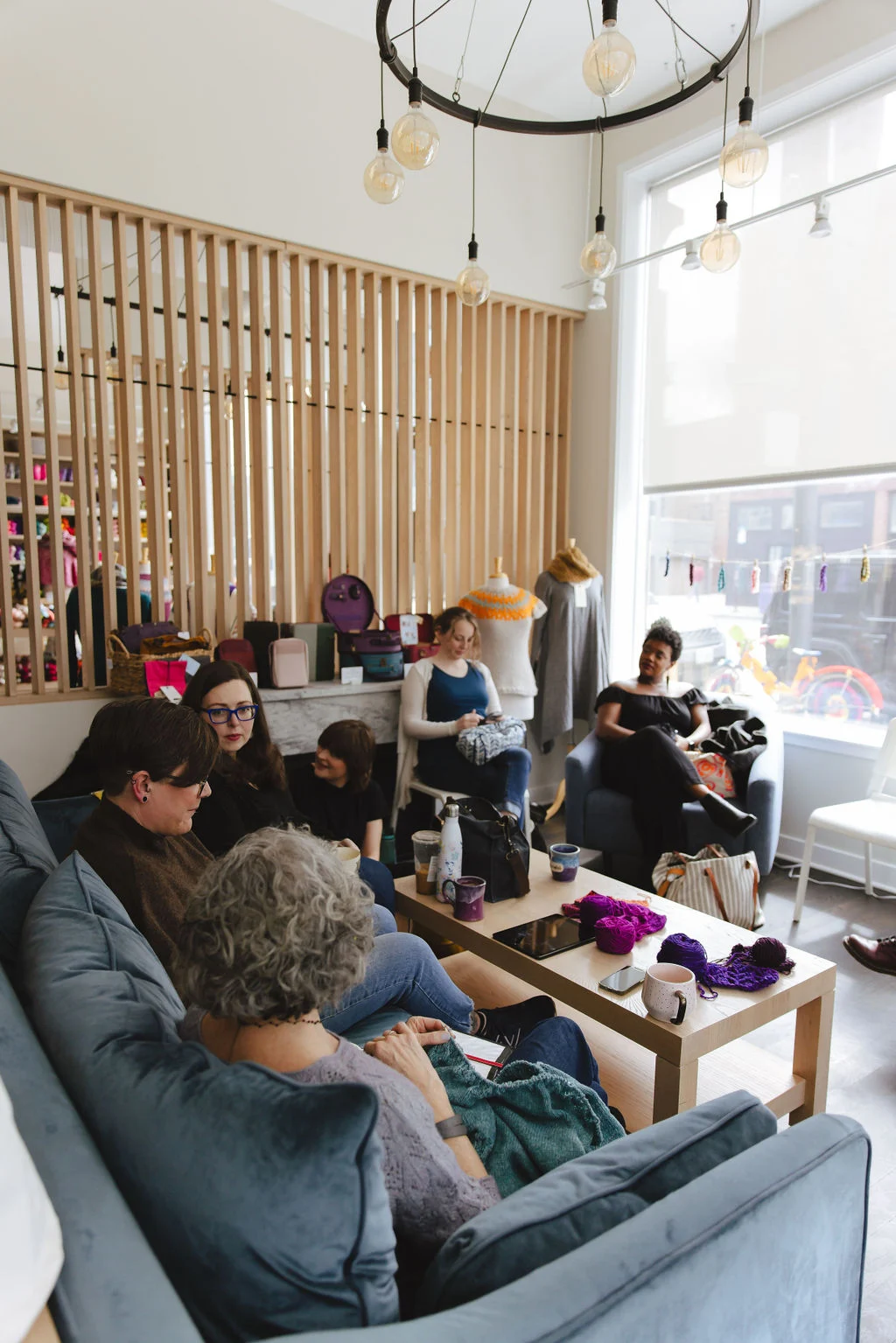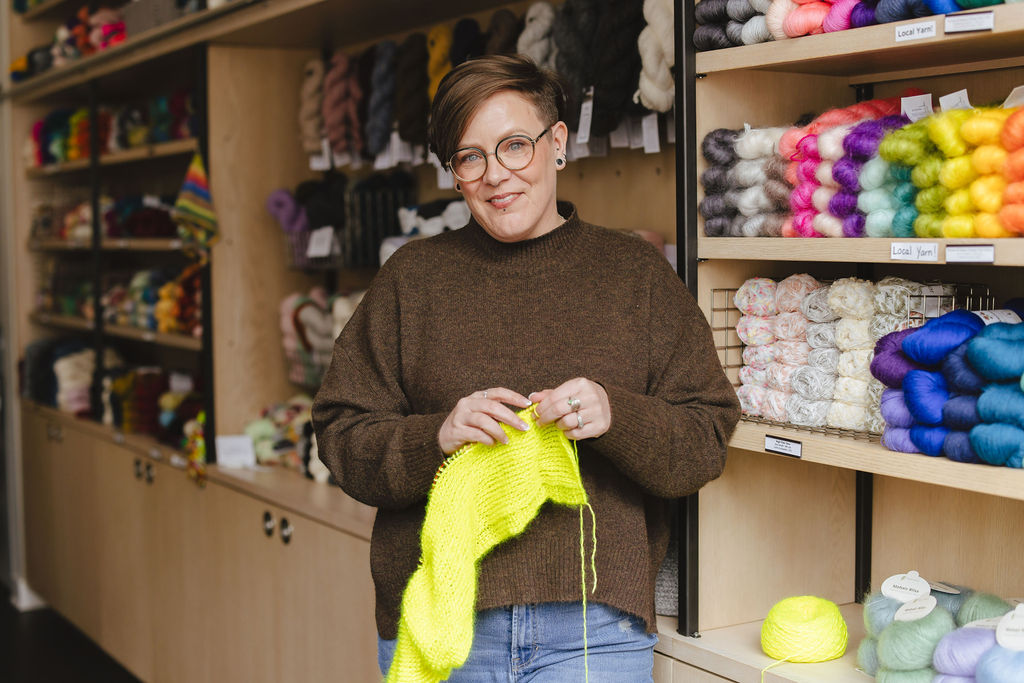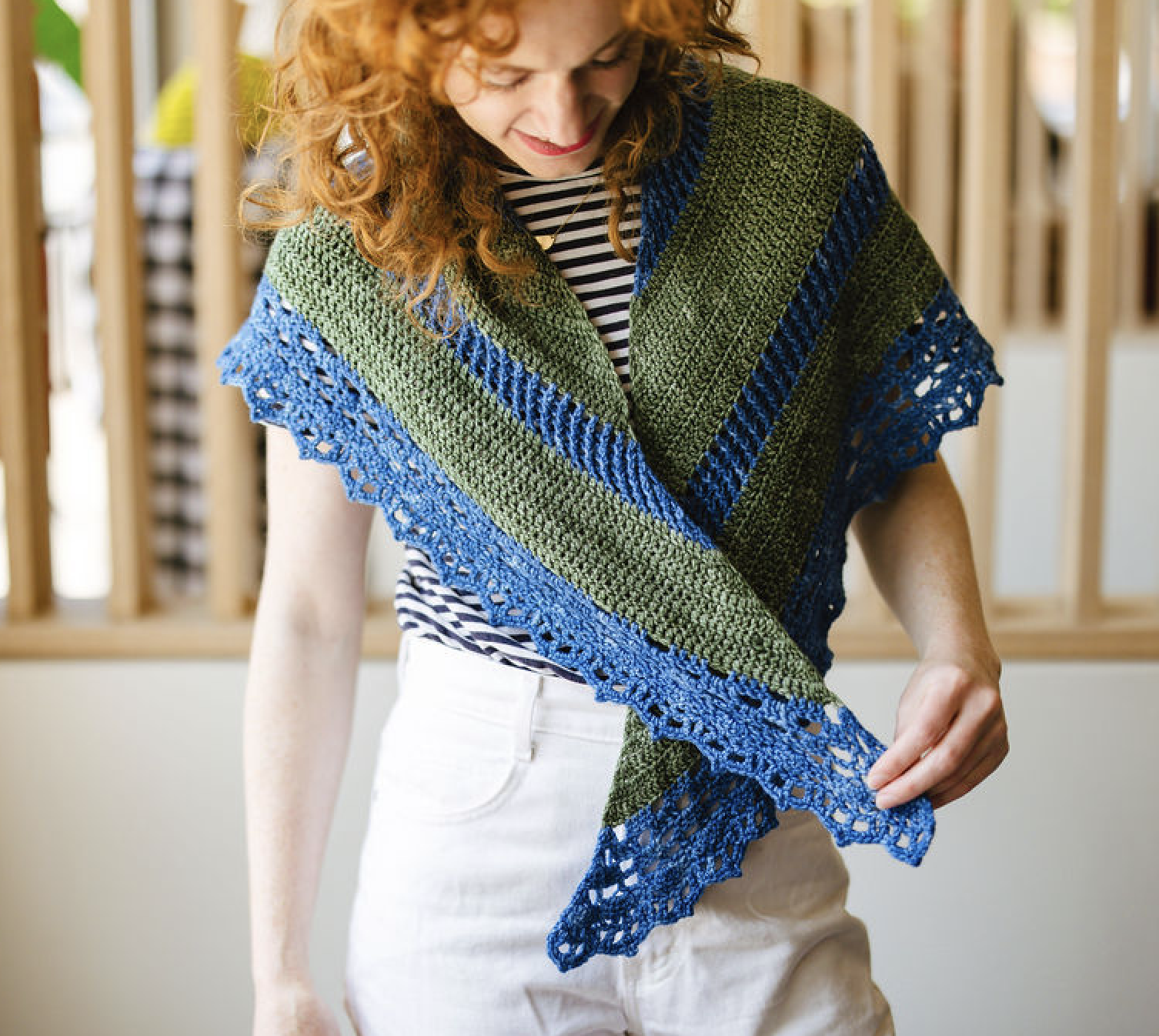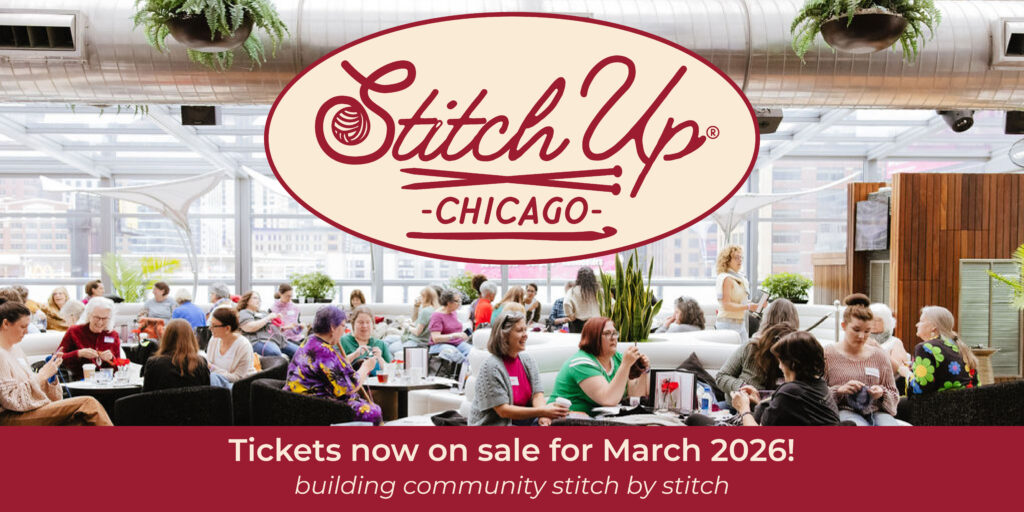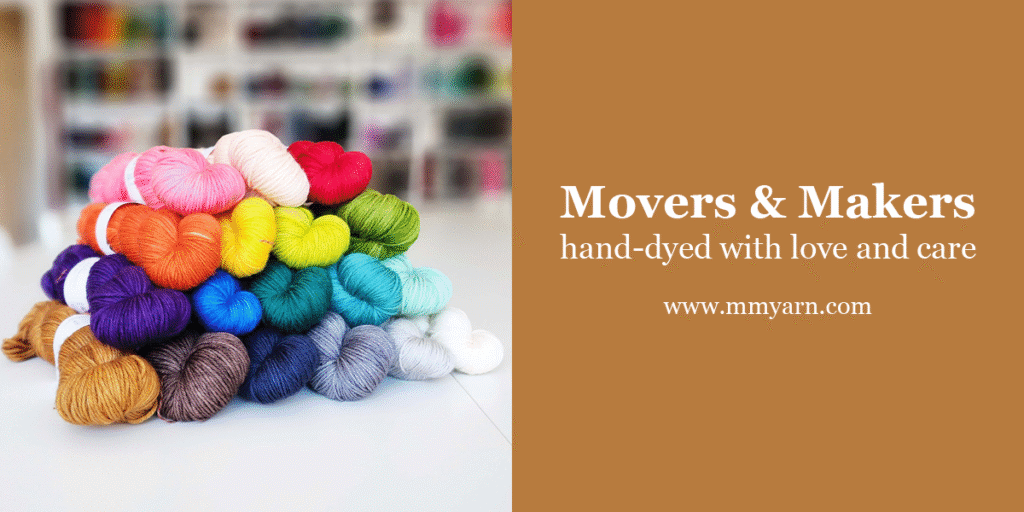By Samantha Brunson, gosadi Early Access User
The world of social media marketing is ever changing. But there are a few staples that should be on your radar as you look to grow your audience. Today we’re exploring one of those key platforms: Facebook!
Did you know that nearly 70% of adults use Facebook? That’s significantly higher than Instagram (47%) or TikTok (33%). It’s where a huge portion of the maker community lives. So it’s important to meet your customers where they are and that means meet them on Facebook.
We’re here to help break you out of your comfort zone and explore 10 tailored strategies to help you enhance your brand presence on Facebook in order to connect you with a global audience of makers who are eager to start stitching your designs.
Important reminder before we dive in…META is constantly changing and updating. While the following advice will work for designers today, it might shift in a year. Make sure you’re subscribed to the GoSadi newsletter to remain up to date on the latest platform advances. We’ll keep you informed as new features roll out.
what sets facebook apart?
Let me describe a typical roadmap for designers who test out Facebook. They create a page, maybe they link that page in their newsletter and on their blog, occasionally they mention it on other channels, and then they link it to Instagram and allow the posts on Instagram to populate the Facebook feed.
Sound familiar? While this approach probably could have worked ten years ago, that is no way to leverage Facebook in 2024.
Creating a Facebook page is only the beginning. To truly thrive, you need to engage with your audience through three pillars.
-
Word-of-Mouth Engagement: If you’ve already followed the typical roadmap for Facebook then chances are, you have a handful of loyal audience members who have begun following you. These are your base supporters. They could be friends, family members, or simply customers whose preferred platform is Facebook. But the key to remember is that these people are already aware of who you are and have some level of knowledge about your brand.
They also want you to succeed. If you give them something to share there is a good chance that they will.
A thriving Facebook page is the hub, but growth happens when others re-share your content and engage with your content. Shareable content attracts new customers. As your base followers share your posts, their friends (and potential future customers) might connect with you too!
-
Meet Your Makers Where They Live: Facebook has been around for ages (in the world of social media, a 20 year old platform is practically a dinosaur). This means that you do not need to recreate the wheel. Get involved in groups that your target customer is already active in.
This doesn’t mean we want you to join another designer’s established Facebook page and to share your patterns in the community they’ve cultivated. BUT you can join pattern sharing groups! If you create mostly with a specific yarn brand’s yarn, then join that group and share your relevant patterns there. If you are a knitter search for knitting groups. If you create children’s crochet patterns search for those terms on Facebook.
The beautiful thing about an older platform is that chances are you are not the first person to want to connect with the maker you’re seeking. The groups exist and they contain loyal stitchers.
Make sure you read the rules and regulations specific to that group before sharing anything. Some groups have rules about self promotion or days of the week when you can post. You don’t want to get kicked out on a technicality.
-
Ads & Demographic Precision: Lastly, to quote Mark Zuckerberg “Senator, we run ads”. It’s hard to compete with Facebook’s ad targeting if you’re looking to connect with US based makers.
If you have the budget, you can use Facebook’s tools to target specific demographics by age, location, and interests. With Facebook’s extensive user data, you can reach exactly the right audience.
BUT a word to the wise, Facebook is a business. They make money off of ads. Once they identify you as a potential revenue stream that’s a bell that can’t be unrung. Make sure that your ad spend is something that can be consistent and long term. It’s important that you don’t start big with an ad spend that you can’t maintain. You can always scale up.
10 quick strategies for GoSadi designers on facebook
Now that we understand the platform a little better, let’s put it into action with ten strategies you can begin using today.
1. Set Clear Goals: Before you begin posting willy-nilly on the platform it’s time to get clear about why you are using it. Sit down and really think about what the desired result of your content will be.
Is your goal brand awareness, engagement, or sales? And for each one you answered yes to, write out what “success” in that area would actually look like to you. Get specific. If brand awareness are you looking at post shares to measure that? Or are you more focused on follower count? If sales, are you looking to increase click through rates? Or are you looking to reach a certain number of pattern sales? What would that number be?
It’s important that you’re clear on what your goal is so that you can begin making content that helps you reach it.
2. Track Data for Precision: Before you begin changing your entire content strategy take a moment to review what has and hasn’t been working for you. It’s hard to argue with the data. Take a look at your page’s analytics. Which posts have historically done the best for you? What similarities are there between them? Could it be based on the times of the day/days of the week? Or does a particular post layout of content type perform better?
Once you know what is working you can begin plotting your next move.
3. Know and Target Your Audience: Facebook has an awesome creator dashboard that will allow you to get to know your customer on paper beyond just the content that they’ve liked.
Take advantage of your analytics to understand who your audience is so you can tailor your content to resonate with their unique interests. This will help you refine future campaigns and will tell you if you are speaking to the customer you think you are.
If you are not speaking to the maker you thought you were, consider your options. You can shift your content to better fit the customer you were trying to reach. Or you can begin shifting your preconceived notion of who your consumer might be.
For example, If you thought you were speaking to grandmothers of young children looking to make gifts for grandchildren but the demographics puts your audience in the 35-45 year old category how will this change the way you speak about your new children’s sweater release?
Getting to know your audience can open up new doors and start conversations!
4. Craft a Content Strategy: We know you have 1 million and 1 things on your to do list and it’s easy for things to get lost. The best way to stay on top of everything is to develop a content calendar for consistent updates, mixing engaging posts with contests and giveaways. You can use social platforms like Later to plot everything out or you can use Facebook’s scheduler.
We recommend taking an hour or two every week and sitting down to schedule out your content for the week ahead. Adding this time into your weekly routine will keep you on track!
Looking for content ideas? The goal with Facebook is to get your community talking. You can do this through sharing educational posts, relatable content, content that elicits a genuine emotion and connection with the viewer, polls, and including calls to action (CTAs) in the descriptions.
You should be making it as easy as possible for your followers to engage with you. Facebook has a wealth of resources for ways you can Drive Discussion within your community.
5. Follow Social Media Content Rules: We know we just said that you should be prioritizing the content that has historically been out performing your post, but there still needs to be a balance. Think of your content like a meal. Memes might be a wonderful dessert but the vegetables and proteins of affiliate links and pattern promotions still need to be on the plate if you want a well balanced diet.
Use the 80/20 rule—balance educational or entertaining content with promotional posts to keep your feed engaging.
6. Post at the Right Time: Analytics are your best friend! Scheduling out your posts for your lunch breaks might be convenient but you could be missing your audience!
Optimize your posting schedule based on when your unique audience is most active. DO NOT GOOGLE “best time of day to post”. Rely on your analytics to tell you what YOUR audience is up to and when. Remember: you are serving and building YOUR community.
7. Engage Frequently: Facebook is not a platform you should be setting and forgetting. Regularly engage on your page and in relevant Facebook groups to improve your visibility and build relationships with your audience members.
Customers who feel as though they know you will want to support you. If someone has taken the time to comment on your content, take time to reply. Allow yourself a few minutes twice a day to check your platforms and reply to any engagement you might have received.
Those few minutes can make a HUGE impact on your community.
8. Leverage Facebook Advertising (When Ready): Before you begin advertising, take a look at the campaigns that your fellow designers are running and also the campaigns that are being served to you on your own Facebook feed. Which ones are you taking the time to engage with and which ones caught your eye? This could be specific to format, color choices, video styles, or text layouts. By analyzing what is working for others you can begin crafting your own.
The Facebook of today is not the Facebook of 20 years ago. Where you used to be able to organically grow your Facebook reach through a grassroots effort, if you are looking to reach a target audience in today’s landscape the answer will be to take advantage of ads. We recommend using this option when promoting a class or book release. You can take advantage of Facebook advertising to specifically target your ideal customer.
As we mentioned above it isn’t just about creating visually appealing ads. Remember to set a sustainable budget for long-term success.
9. Be Mindful of Reviews: It isn’t the review that kills the business, it’s how the business responds to that review. It’s easy to take criticism personally, but oftentimes it’s not personal at all. It’s also easy for a customer to forget that a real human with real feelings is on the other end of the screen.
No matter what comes at you, respond professionally to both positive and negative feedback. Approach constructive criticism with a calm, business-minded perspective.
But remember that your Facebook page is your home base. If someone is being destructive to your home it’s ok to set a boundary in a professional manner about what is allowed in your space. Facebook allows you to ban key words that could be trouble later. Be proactive and fill out that list.
When you get a negative review that is purely constructive, take a beat before replying. Read it out loud so that you can hear what a customer might hear when they read it. And even consider sending your reply to a trusted friend to read before you press send.
10. Keep the Bigger Picture in Mind: Remember that Facebook is just one piece of your overall strategy. No platform should take up all of your attention. After a few months, reevaluate whether the time you’ve invested in Facebook is paying off. If not, it’s time to think about if your time is better spent on another platform.
Ready to level up your entire social media game? Head to the grapevine to begin your Instagram & Pinterest journeys TODAY! Sign up for our newsletter today and stay in the loop with the latest tips and strategies!
